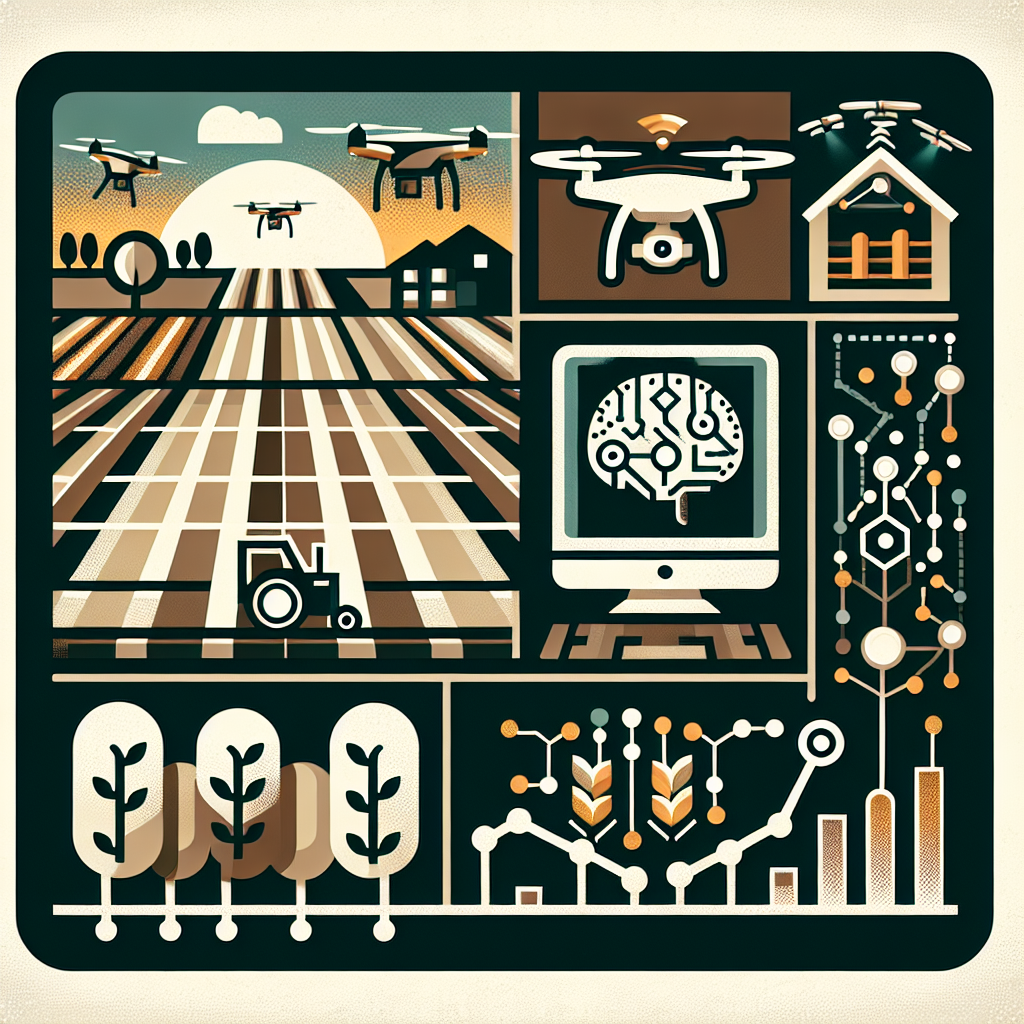The Impact of AI on Agricultural Market Information Systems
Introduction
In recent years, the agricultural industry has seen a significant transformation with the advent of Artificial Intelligence (AI). AI has the potential to revolutionize agricultural market information systems by providing real-time data and analysis to farmers, traders, and policymakers. In this article, we will explore the impact of AI on agricultural market information systems and how it is reshaping the way information is collected, analyzed, and disseminated in the agricultural sector.
AI in Agricultural Market Information Systems
AI technology is being used in various aspects of agricultural market information systems to improve efficiency, accuracy, and decision-making. One of the key applications of AI in agriculture is in data collection and analysis. AI algorithms can process large volumes of data from various sources such as satellite imagery, weather forecasts, market prices, and crop yields to provide valuable insights to farmers and other stakeholders.
AI can also be used to predict market trends and price fluctuations, helping farmers make informed decisions about when to buy or sell their products. By analyzing historical data and real-time market information, AI algorithms can identify patterns and trends that may not be apparent to human analysts.
Another important application of AI in agricultural market information systems is in crop monitoring and management. AI-powered drones and sensors can be used to collect data on crop health, soil moisture levels, and pest infestations, allowing farmers to take timely actions to protect their crops and maximize yields.
AI can also be used to automate tasks such as crop spraying, irrigation, and harvesting, reducing labor costs and increasing efficiency. By integrating AI with Internet of Things (IoT) devices, farmers can create smart agricultural systems that can monitor and control various aspects of their operations remotely.
Impact on Farmers
The adoption of AI in agricultural market information systems has a significant impact on farmers. By providing access to real-time data and analysis, AI can help farmers make better decisions about crop management, marketing, and risk mitigation. Farmers can use AI-powered tools to optimize planting schedules, select the best crop varieties, and predict yields with greater accuracy.
AI can also help farmers reduce input costs by optimizing the use of fertilizers, pesticides, and water. By analyzing soil and weather data, AI algorithms can recommend the optimal amount of inputs to use for maximum yield and minimal environmental impact.
Furthermore, AI can help farmers mitigate risks by providing early warnings of potential threats such as pest outbreaks, diseases, and extreme weather events. By monitoring crop health and environmental conditions, farmers can take proactive measures to protect their crops and minimize losses.
Impact on Traders and Policymakers
AI is also transforming the way traders and policymakers access and analyze agricultural market information. By providing real-time data on supply and demand dynamics, price trends, and trade flows, AI can help traders make better decisions about when to buy or sell agricultural commodities.
Policymakers can use AI-powered tools to monitor market conditions, identify areas of potential food insecurity, and design targeted interventions to support farmers and consumers. By analyzing data on crop production, prices, and trade flows, policymakers can develop evidence-based policies to ensure food security, promote agricultural sustainability, and support rural development.
FAQs
Q: How does AI improve data collection in agricultural market information systems?
A: AI algorithms can process large volumes of data from various sources such as satellite imagery, weather forecasts, market prices, and crop yields to provide valuable insights to farmers and other stakeholders. By analyzing data in real-time, AI can help farmers make informed decisions about crop management, marketing, and risk mitigation.
Q: Can AI predict market trends and price fluctuations in agriculture?
A: Yes, AI algorithms can analyze historical data and real-time market information to identify patterns and trends that may not be apparent to human analysts. By predicting market trends and price fluctuations, AI can help farmers and traders make better decisions about when to buy or sell agricultural commodities.
Q: How does AI help farmers reduce input costs in agriculture?
A: AI can help farmers optimize the use of fertilizers, pesticides, and water by analyzing soil and weather data to recommend the optimal amount of inputs to use for maximum yield and minimal environmental impact. By reducing input costs, farmers can increase profitability and sustainability in their operations.
Q: What are the benefits of using AI in agricultural market information systems?
A: The benefits of using AI in agricultural market information systems include improved data collection and analysis, better decision-making for farmers and traders, increased efficiency and productivity, reduced input costs, and enhanced risk mitigation. AI can help stakeholders in the agricultural sector make informed decisions to optimize their operations and maximize yields.
Conclusion
In conclusion, AI is revolutionizing agricultural market information systems by providing real-time data and analysis to farmers, traders, and policymakers. By harnessing the power of AI, stakeholders in the agricultural sector can make better decisions about crop management, marketing, and risk mitigation. The adoption of AI in agriculture is expected to continue to grow as the technology becomes more advanced and accessible, leading to a more efficient, sustainable, and resilient agricultural industry.

